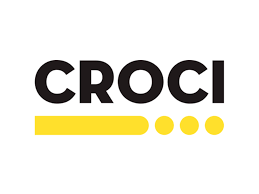In the realm of financial analysis and investment strategy, CROCI (Cash Return On Capital Invested) serves as a pivotal metric, offering deep insights into a company’s financial health and profitability. This comprehensive guide explores the intricacies of CROCI, its methodology, significance in financial analysis.
CROCI, or Cash Return On Capital Invested, stands as a cornerstone metric in financial analysis, providing investors and analysts with a robust framework to assess the economic performance and efficiency of companies.
Table of Contents
- Introduction to CROCI
- Understanding CROCI: Definition and Methodology
- Significance of CROCI in Financial Analysis
- Application of CROCI in Investment Strategies
- Challenges and Limitations of CROCI
- Future Trends and Evolution of CROCI
- Conclusion
Understanding CROCI: Definition and Methodology
At its core, CROCI measures the cash flow generated by a company relative to the capital invested in it. Unlike traditional metrics such as Return On Equity (ROE) or Return On Capital Employed (ROCE).. This distinction is crucial as it provides a clearer picture of a company’s ability to generate actual cash.
The methodology behind CROCI involves:
- Cash Flow Analysis: Examining cash flows from operating activities, investments, and financing to derive a net cash flow figure.
- Capital Employed Calculation: Determining the total capital invested in the company, including equity and debt components.
- Normalization: Adjusting for exceptional items, non-recurring expenses, and accounting distortions to reflect sustainable cash flows.
By standardizing these calculations across companies, CROCI enables meaningful comparisons within industries and across different sectors.
Significance of CROCI in Financial Analysis
CROCI serves multiple critical functions in financial analysis:
- Performance Evaluation: It provides a more accurate assessment of a company’s operational efficiency and financial performance.
- Valuation Tool: CROCI helps investors gauge the intrinsic value of a company by estimating future cash flows.
- Risk Management: Companies with consistently high CROCI ratios typically exhibit stronger financial health.
Application of CROCI in Investment Strategies
In practice, CROCI is integrated into various investment strategies and decision-making processes:
- Sector Analysis: Analysts use CROCI to identify sectors or industries with higher potential.
- Stock Selection: Investors screen stocks based on CROCI ratios to identify undervalued companies.
- Portfolio Construction: CROCI-based strategies may emphasize allocating capital to companies with sustainable and improving CROCI metrics.
Challenges and Limitations of CRO–CI
While CRO-CI offers compelling insights, it is not without its challenges:
- Data Availability: Obtaining accurate and consistent data for cash flow and capital employed can be challenging, particularly for companies operating in multiple jurisdictions or industries.
- Accounting Adjustments: Normalizing financial statements to exclude non-recurring items or accounting anomalies requires careful judgment and may introduce subjectivity.
- Dynamic Business Environments: Economic fluctuations, regulatory changes, and industry disruptions can impact CRO-CI metrics, necessitating ongoing monitoring and adjustment of investment strategies.
Future Trends and Evolution of CRO-CI
As financial markets evolve and investor preferences shift, the application and refinement of CROCI are likely to continue:
- Integration of ESG Factors: Incorporating Environmental, Social, and Governance (ESG) criteria into CRO-CI frameworks to assess companies’ sustainability practices and long-term resilience.
- Technological Advancements: Leveraging big data analytics and artificial intelligence to enhance the accuracy and timeliness of CRO-CI calculations and predictive modeling.
- Global Standardization: Efforts to standardize CRO-CI methodologies across regions and industries to improve comparability and transparency in financial reporting.
Challenges and Limitations of CRO-CI
Implementing CRO-CI in practical financial analysis encounters several challenges and limitations. One primary challenge is the availability and consistency of data required for accurate cash flow analysis and capital employed calculations. Companies operating in diverse industries and jurisdictions may present varying complexities in data collection and normalization processes.
Future Trends and Evolution of CRO-CI
The evolution of CRO-CI is poised to incorporate emerging trends and technological advancements in financial analysis. One significant trend is the integration of Environmental, Social, and Governance (ESG) factors into CRO-CI frameworks. This evolution reflects increasing investor demand for sustainable investing practices and metrics that assess companies’ long-term resilience and societal impact. Furthermore, advancements in big data analytics and artificial intelligence are enhancing the accuracy and timeliness of CRO-CI calculations.
Practical Applications of CR-OCI Metrics
Financial analysts and investors utilize CRO-CI metrics to gain deeper insights into company performance and financial health. By focusing on cash flows rather than accounting profits, CRO-CI provides a more accurate assessment of a company’s operational efficiency and ability to generate sustainable returns on invested capital. This approach helps analysts identify undervalued stocks or sectors with robust cash flow generation potential. Moreover, CRO-CI metrics guide investment strategies by informing portfolio allocation decisions based on companies’ capital efficiency and potential for long-term value creation.
Comparative Analysis Across Industries
One of the strengths of CRO-CI lies in its ability to facilitate comparative analysis across different industries and sectors. By standardizing cash flow calculations and capital employed metrics, analysts can benchmark companies within the same industry and identify outliers in terms of capital efficiency and profitability. This comparative approach enables investors to assess sector-specific trends, competitive dynamics, and investment opportunities.
Investor Considerations and Decision Making
For investors, understanding CRO-CI metrics is crucial for informed decision-making and portfolio management. By evaluating a company’s CRO-CI ratio and trend over time, investors can gauge management’s effectiveness in deploying capital and generating sustainable cash flows. A high CRO-CI ratio suggests that a company efficiently utilizes its resources to generate profits, which may indicate a strong competitive position.
Regulatory and Reporting Implications
The adoption of CR-OCI metrics in financial reporting and regulatory frameworks has implications for companies, investors, and regulators alike. As CRO-CI gains prominence in financial analysis, regulators may consider its integration into standardized reporting requirements to enhance transparency and comparability across industries. For companies, complying with CRO-CI reporting standards may require adjustments in financial disclosure practices and internal controls to ensure accuracy and consistency of data.
conclusion
CRO-CI represents a sophisticated approach to financial analysis that transcends traditional metrics, focusing on cash flows and capital efficiency to evaluate company performance and investment opportunities rigorously. By understanding CROCI’s methodology, significance, applications, and evolving trends, investors can leverage this powerful metric to make informed decisions, navigate market uncertainties, and pursue sustainable wealth creation strategies in an increasingly dynamic global economy.







